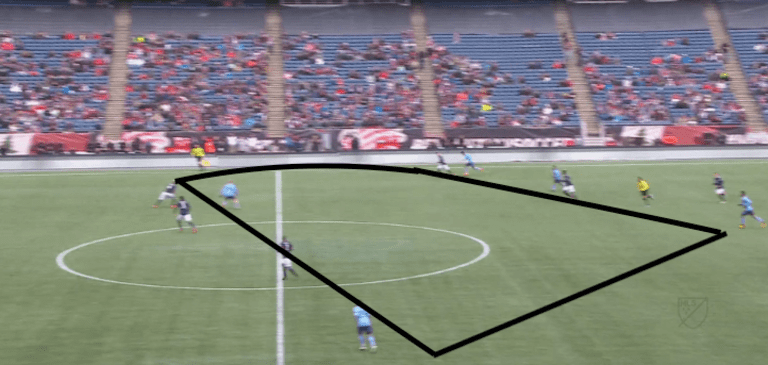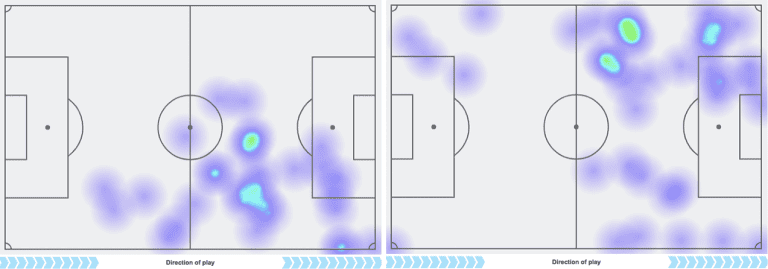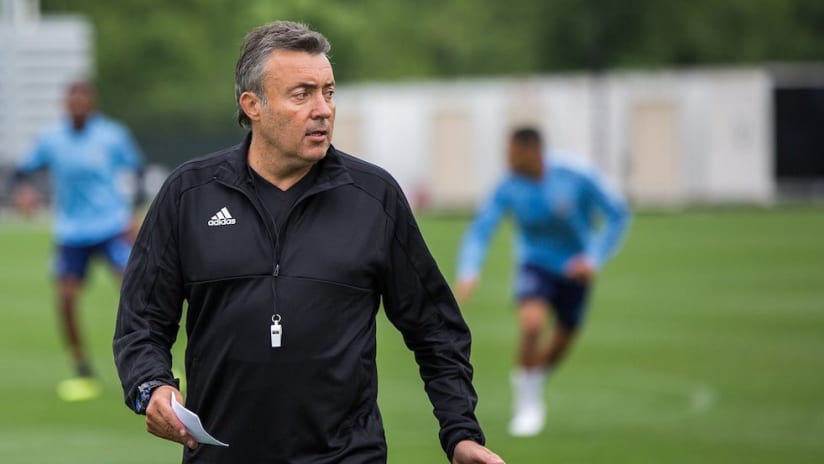Domè Torrent opened his New York City FC tenure with a 2-1 win over Toronto FC on Sunday.
The victory is just the beginning. As Torrent told NYCFC.com, “We have a good team. We are able to win MLS.”
“I won’t change many things because Patrick Vieira did a fantastic job,” Torrent said. “It’s the perfect philosophy, for me. But every week we introduce little changes because … in life, in general, you can always improve.”
It’s an interesting line. If Vieira did a fantastic job, why tinker? If the old boss implemented the perfect philosophy, what is there to add? NYCFC already play one of the most free-flowing, complicated systems in Major League Soccer – where is the wiggle room?
Torrent spent the last 13 years working with Pep Guardiola at Barcelona, Bayern Munich and Manchester City. Going back through old their seasons together, as well as old interviews and books about Torrent and Guardiola, here are a few things we could expect Torrent to add to NYCFC’s repertoire.
1) Flip the midfield triangle
NYCFC has generally played with two center midfielders, Alex Ring and Yangel Herrera, behind a single attacking mid, Maxi Moralez. Herrera would play slightly ahead of Ring, but it remained a variation of two players behind a single playmaker.
Torrent and Guardiola, however, have generally played with a single pivot behind two more attack-minded players. Manchester City currently play with Fernandinho behind Kevin De Bruyne and David Silva, two of the best attacking midfielders in the world. At Bayern, Xabi Alonso would often play behind Arturo Vidal and Thiago Alcantara.
Most teams play two defensive mids to protect the space in front of the center backs. Flipping the triangle, however, puts the numerical superiority farther up the field. Instead of having two players to protect the danger zone in front of the defenders, you have two players to win the ball back in a more advanced position. As Torrent said upon his arrival to NYC, one of the most important parts of his philosophy is “when you lose to ball, to recover the ball as soon as possible.”
It’s unclear, though, whether NYCFC has the ready-made personnel for it. Moralez has shown during his time in MLS that he’s capable of playing deeper. But the options other than Moralez don’t have a huge body of work in that role. Tommy McNamara has generally been more of a goalscoring attacker and Ebenezer Ofori has spent his time with NYCFC as a defensive midfielder. With that said, Torrent and Guardiola never shied away from putting players in new positions; as Martí Perarnau writes in Pep Confidential, “Assistant coach Domènec Torrent turns to Pep and says: ‘Why don’t we try [right back Philipp] Lahm as a pivot?’”
2) Longer passes from the goalkeeper
One of the cooler tactical innovations of 2017-18 was Man City’s use of their goal kicks. In a typical setup, the team in possession splits the center backs on the sides of 18-yard-box to receive a short pass from the goalkeeper. If the other team steps up to take away the short passes, the goalkeeper tells everyone to push up to compress the field and the ‘keeper hits it long. Man City, though, didn’t push up before their goalkeeper, Ederson, kicked it long. They wanted the opposing team to remain stretched out.
It’s an addition NYCFC can make as teams often try to press them high on the field as well. For example, take a look at this picture from earlier in the season, when New England tried to prevent NYCFC from playing out of the back. NYCFC has just attempted to play long to bypass the press on a similar scenario. Notice the gap between New England’s defenders and midfielders; it’s a natural consequence of a high press.

The Cityzens have sometimes played long to avoid the press, but not necessarily to use it against the opponent. Man City, conversely, used Ederson’s passing range to exploit that gap: Ederson would either drive a long ball either to a striker’s feet or, if the opposing defenders tried to take the gap away, behind the opposing defense altogether. It was never a “lumped” ball forward, but rather a clipped pass, similar to what we generally see from defensive midfielders. Sean Johnson plays long passes for NYCFC at times, but they are aimed toward the sideline; if they go down the middle, they are rarely part of a designed, controlled pattern. It’s a subtle difference, but one that matters. It’s risky to play the passes into central zones, but one that can unlock opposing defensive schemes.
3) Keep the wingers wide
This is the first adjustment Torrent has made. Vieira mostly inverted the wingers and had them attack inward toward central zones – Ismael Tajouri-Shradi, for example, would play on the right and cut toward goal. The outside backs would then overlap to create the attacking width. It’s the common pattern among teams now. Torrent, however, wants the opposite.
“We changed a little bit tactically because when our outside backs are up, the winger is inside,” Torrent said, after the win over Toronto. “I prefer the winger outside and the outside back control inside. We change a little bit because Ismael [Tajouri-Shradi] played, for me – it’s my opinion – much better on the left.”
Switching Tajouri-Shradi, a left-footed player, to the left wing encourages him to attack toward his left foot on the outside part of the field. Below, on the left, we can see Tajouri-Shradi’s heat map from the first half; on the right, from the second half. Both maps denote NYCFC moving left-to-right. In the first half, Tajouri-Shradi spent time more time centrally; in the second, he stayed closer to the touchline and higher in the field.

In Torrent’s first two years at Man City, Leroy Sane, a left-footed player, would play on the left and Raheem Sterling, a right-footed player, on the right wing. Instead of cutting inward, they were told to stay toward the sideline and attack the wide channels.
As an knock-on effect, the outside back then needs to take up more central attacking positions normally reserved for center mids. It’s something we saw from David Alaba at Bayern and Fabian Delph at Manchester City (and now at Sporting KC with Graham Zusi). Vieira experimented with it during the 2016 season, but strayed away. This shift could make an NYC resurgence under Torrent.
4) More game-to-game adjustments
After the win over Toronto, Torrent told reporters, “In the second half, we played another way.” That's not something we’re used to hearing from an NYCFC manager.
One of the biggest criticisms of Vieira’s time at NYCFC was his lack of flexibility. NYCFC played nearly every game the same way. They never seemed to adjust for a specific occasion or opponent. Vieira’s belief in his system was impressive, and it was nice as a viewer to know what to expect from NYCFC every week, but it also left some wondering if he should have been more willing to deviate when necessary.
It already appears that Torrent will be more flexible.The question becomes: Does he have enough time this year to implement Plans B and C? The next opportunity comes this Saturday against Chicago (8 pm ET | TV & streaming info).













